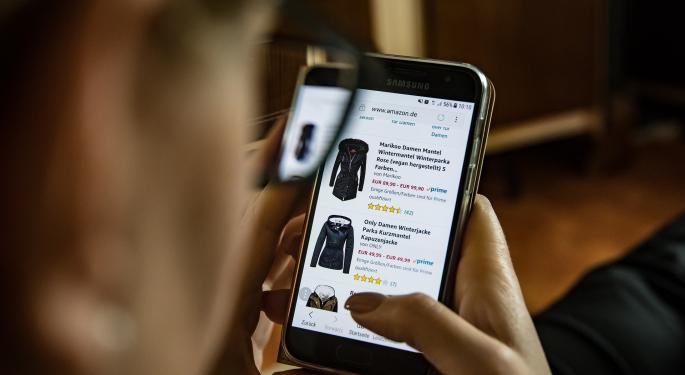Online Shopping ETF Has Post-Pandemic Utility

E-commerce and online retail equities and the related exchange-traded funds are among the biggest beneficiaries of the stay at home orders forced by the coronavirus pandemic.
What Happened: Up more than 73% year-to-date, the ProShares Online Retail ETF ONLN is one of the stars among online retail ETFs, indicating that last week's 6% pullback could be a buying opportunity.
ONLN follows the ProShares Online Retail Index. The fund is top-heavy, but in this case, that's alright because “top-heavy” means a combined weight of almost 36% to Amazon AMZN and Alibaba BABA at the end of the second quarter.
Why It's Important: As many investors already know, Amazon, Alibaba and a slew of other ONLN components were soaring prior to the coronavirus pandemic, stealing market share from brick-and-mortar retailers in the process. The pandemic is merely speeding along the ascent of e-commerce, packing years worth of altered consumer behavior into a matter of months.
“The US Census Bureau recently released their e-commerce report for the 2nd quarter of 2020, the first quarter that felt the impact of the pandemic in its entirety,” said ProShares Global Investment Strategist Simeon Hyman in a recent note. “The report showed a dramatic increase in both total e-commerce sales as well as penetration. Though the second quarter total retail sales declined 3.9% from the first quarter, E-commerce sales increased 31.8%.”
Data confirm investors are buying into the online shopping thesis. Year-to-date, ONLN has hauled in nearly $200 million in new assets. That's impressive for any thematic ETF, but even more so when considering ONLN is just over 2 years old and has $308.17 million in assets under management, meaning 2020 is proving to be an epic year for the ProShares ETF.
What's Next: Vital to the ONLN thesis is that bullishness won't evaporate when COVID-19 is finally defeated.
“It is tempting to chalk this up to a temporary impact of the pandemic, but there are signs that this pandemic is accelerating an existing long-term trend and furthering opportunities for e-commerce growth,” notes Hyman. “One glaring example: e-commerce food and beverage sales increased over 100% from the first quarter and over 220% over the second quarter of last year.”
Adding to the longer-term case for ONLN is that new consumer habits often prove hard to break, as is being seen in this back-to-school shopping.
“With students in some states already back in school and others preparing to return to school, families are expecting to spend a combined record-breaking $33.9 Billion to get their children ready, with a new record of 37% of that spending occurring online,” said Hyman. “As such, new habits – in previously underpenetrated categories – may be hard to break.”
© 2020 Benzinga.com. Benzinga does not provide investment advice. All rights reserved.



